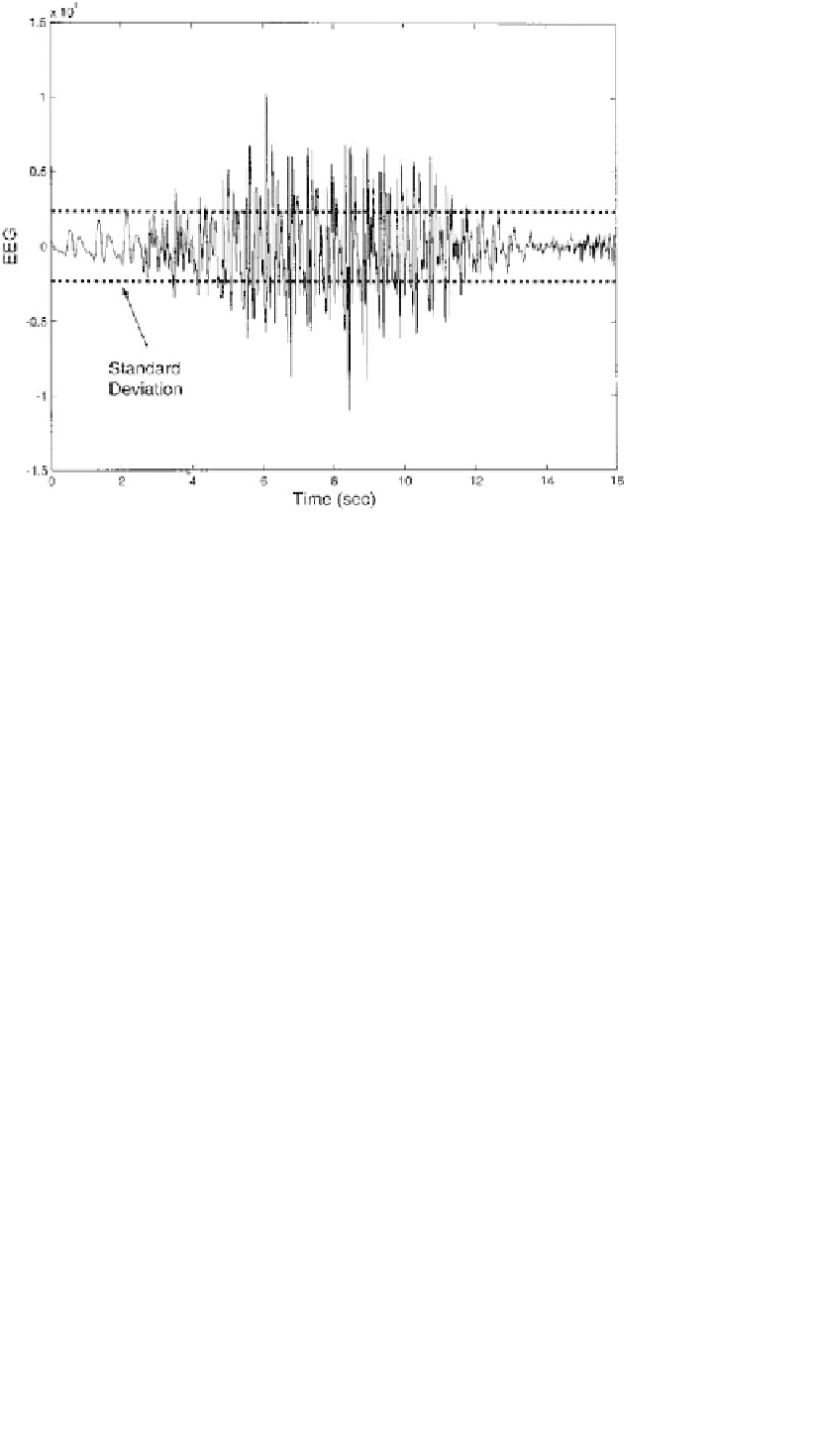Biomedical Engineering Reference
In-Depth Information
Figure 2.4-5 A segment of electroencephalogram signal shown in
Figure 2.4-4
with the positive and negative standard deviation
(dotted horizontal line).
negative values of standard deviation indicated by
horizontal dotted lines.
When multiple measurements are made, multiple
values or signals will be generated. If these measurements
are combined or added together, the means add so that
the combined value, or signal, has a mean that is the
average of the individual means. The same is true for the
variance: the variances add and the average variance of
the combined measurement is the mean, or average, of
the individual variances:
The mean standard deviation becomes:
N
X
N
N
N
p
s
¼
s
=
N
p
Mean s
¼
1
s
k
¼
1
k ¼
1
[Eq. 2.4.22]
In other words, averaging measurements from different
sensors, or averaging multiple measurements from the
same source, will reduce the standard deviation of the mea-
surement's variability by the square root of the number of
averages. For this reason, it is common to make multiple
measurements whenever possible and average the results.
This approach can also be applied to entire signals, a tech-
nique known as
ensemble averaging.
An example of ensem-
ble averaging is given in the MATLAB implementation
section of this chapter.
N
X
N
s
2
¼
1
s
k
[Eq. 2.4.21]
k ¼
1
where
N
is the number of signals being averaged. The
standard deviation of the averaged signal is the square
root of the variance so the standard deviations add as the
p
N
times the average standard deviation. Accordingly,
the mean standard deviation is the average of the in-
2.4.2.1 Decibels
dividual standard deviations divided by
N
p
. Stated
It is common to compare the intensity of two signals
using ratios,
V
Sig
1
/
V
Sig
2
, and to represent such ratios in
units of
decibels.
Actually, decibels (dB) are not really
units, but are simply a logarithmic scaling of ratios. The
decibel has several advantageous features: (a) It provides
a measurement of the effective power, or power ratio;
(b) the log operation compresses the range of values (for
example, a range of 1 to 1,000 becomes a range of 1 to 3
in log units); (c) when numbers or ratios are to be mul-
tiplied, they simply add if they are in log units; and
(d)
mathematically, from Eq.
2.4.21
:
X
N
s
k
¼ N
s
2
k¼
1
Taking the square root of both sides:
s
k
¼
p
X
N
¼
N
p
N
s
2
s
the
logarithmic
characteristic
is
similar
to
k¼
1














